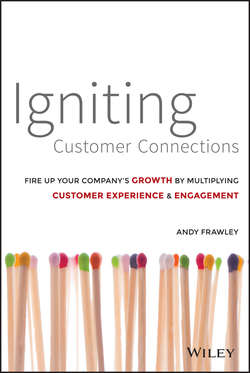Читать книгу Igniting Customer Connections - Frawley Andrew - Страница 10
На сайте Литреса книга снята с продажи.
Part One
Connect with Your Customers —Now
Chapter 1
The New Marketing Landscape
Tectonic Shifts Drive Crucial Changes in Consumer Behavior
ОглавлениеWhat have these tectonic shifts done to affect the way consumers behave? Plenty.
• Consumers are never more than an arm's length from all the information in the world. They can communicate with each other (and brands), engage in social media, and conduct research on products and much more – anytime, anywhere. And always on means being in a shopping state of mind. On average, 73 percent of participants in a recent study visited a retail location after receiving a location-aware text message. And 61 percent made a purchase as a result of the message, according to eMarketer and Forrester Research.
• Consumers are connected to each other in new ways. The news (good or bad) spreads faster than ever. People talk, tweet, post, and blog. And their reach is just as broad as ours as marketers. Every citizen-buyer is a marketer now, just like everyone is an on-the-scene reporter – whether they choose to take advantage of that role or not.
• The purchase path is nonlinear. Consumers are making decisions in real time, wherever they go. Customers are making buying decisions all the time – on their tablets, on their phones, or at work when they're supposed to be doing something else. The path to purchase is now less of a journey and more of a decision space, where consumers enter and leave based on their readiness to buy – and the ability of marketers to move them into that zone.
Figure 1.2 Millennial consumers are more likely to trust their peers than brands, with 50 percent reading reviews on their mobile devices while shopping (versus 21 percent of nonmillennials, according to Forrester Research).
Figure 1.3 Everywhere commerce turns shopping inside out. Purchasing can take place anywhere or any time a consumer has access to a screen. By 2017, mobile commerce will account for 26 percent of U.S. retail e-commerce sales (eMarketer).
Figure 1.4 Consumers are more likely to opt in and exchange privacy for relevant messaging that they see value in. Eighty-one percent of recipients of e-mails containing personalization drawing from previous shopping behaviors and preferences are more likely to increase their purchases. Thirty-one percent are willing to share a mobile number, and 32 percent are willing to share their social handles (eMarketer, National Retail Federation).
Marketing interactions, once quarterly or monthly, are happening all the time, and in exponential numbers. A major marketing organization may have thousands of campaigns running all the time. In fact, the word campaign– implying a long, concerted effort – may no longer apply. It's more about marketing interactions– small, focused, agile efforts aimed at achieving a near-term goal while building deeper, long-term customer connections.
• Social media has a powerful voice. Thanks to ubiquitous social media, global and local are more intertwined than ever. The ripple effects of events happening across the world – of revolutions, extreme weather, economic trends, and more – have a local impact, good or bad. One image of your company's product or logo in the wrong place at the wrong time can undermine years of good intentions.
• Consumers have high expectations. Particularly among younger consumers, the expectations for content and communication are high, boosted by Amazon.com, YouTube, and much more. Consumers expect relevant recommendations at the right time. They expect consistency across all channels. And video and other rich media aren't an exception anymore. They're the standard, and that standard continues to grow. To be effective, marketing needs to be in the media vernacular of the moment, or (ideally) ahead of that moment. After all, 65 percent of your audience learns visually, according to WebDAM Marketing Trends for 2014. And visual data is processed 60,000 times faster by the brain than text is.
• Information about a consumer's experience and emotion are widely available. In the past, we had to rely on focus groups and anecdotes to understand the emotional feelings of consumers. Today, through social media, most consumers are volunteering lots of information about how they feel. This information, along with low-cost surveys, allows brands to actively use emotional data as an aspect of their audience selection and segmentation.
• Consumers will be willing to trust you if you get it right. If brands deliver on their promises, personalize communications, create relevant offers, and respect privacy, consumers can still express old-fashioned loyalty. It just may not last as long as it used to.
• They control the message. The balance of power has shifted from brands to consumers. And the impact of consumer empowerment cannot be underestimated. Yes, there are more and more channels and consumer touch points. But the consumer has the power to turn off, delete, and block messaging. So respecting consumers' time and intelligence is even more important than ever. Otherwise the all-important customer connection can be diminished or even lost.
